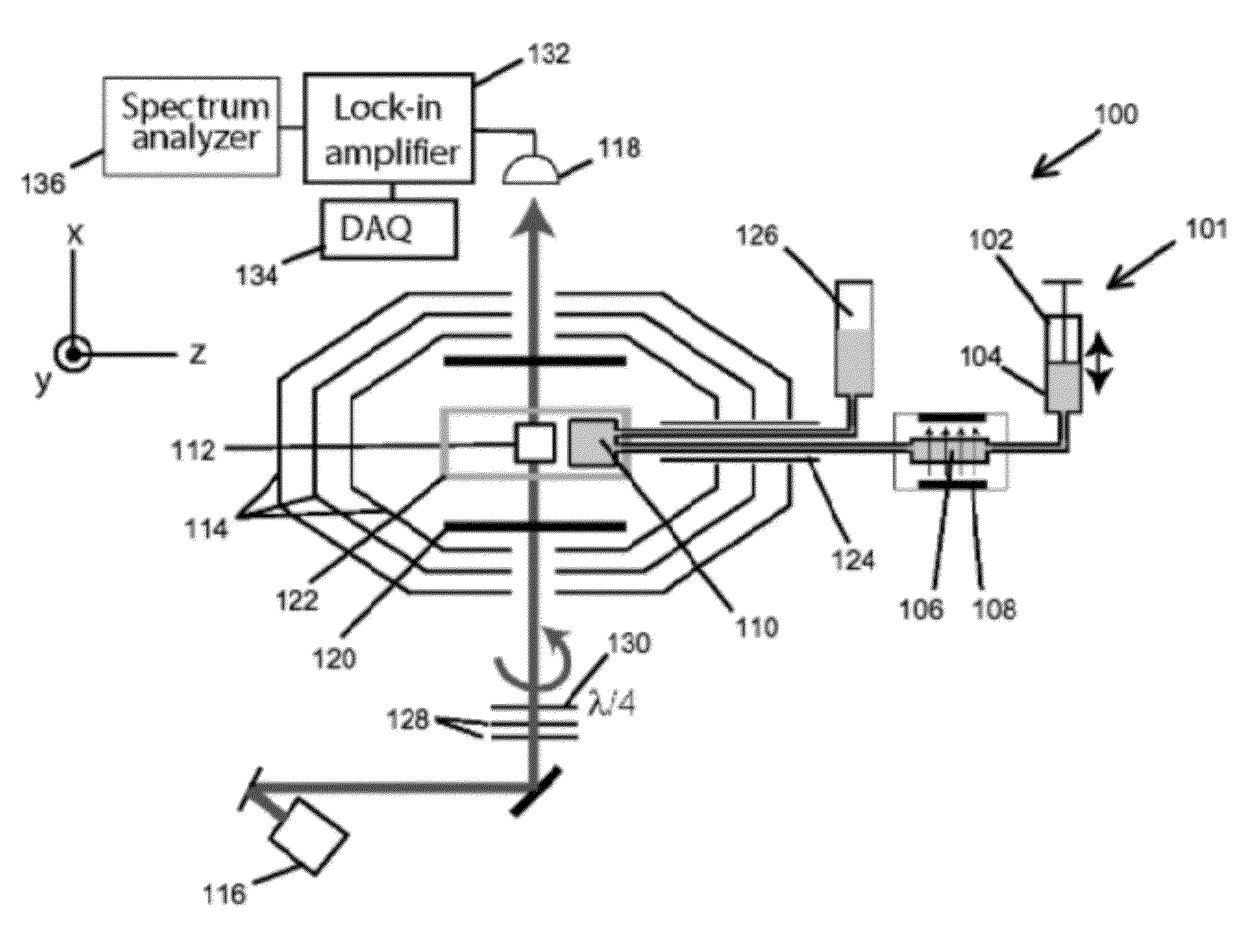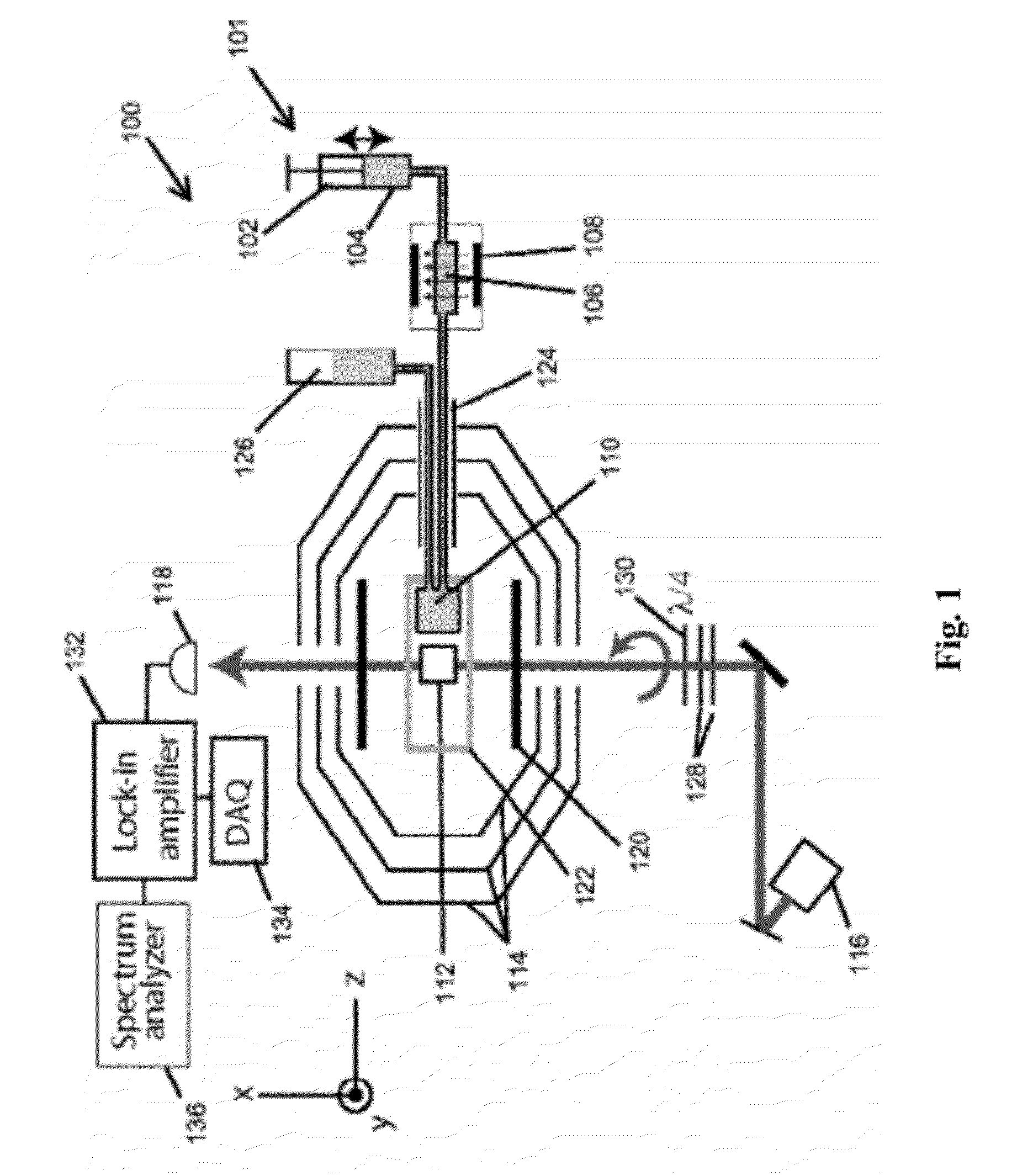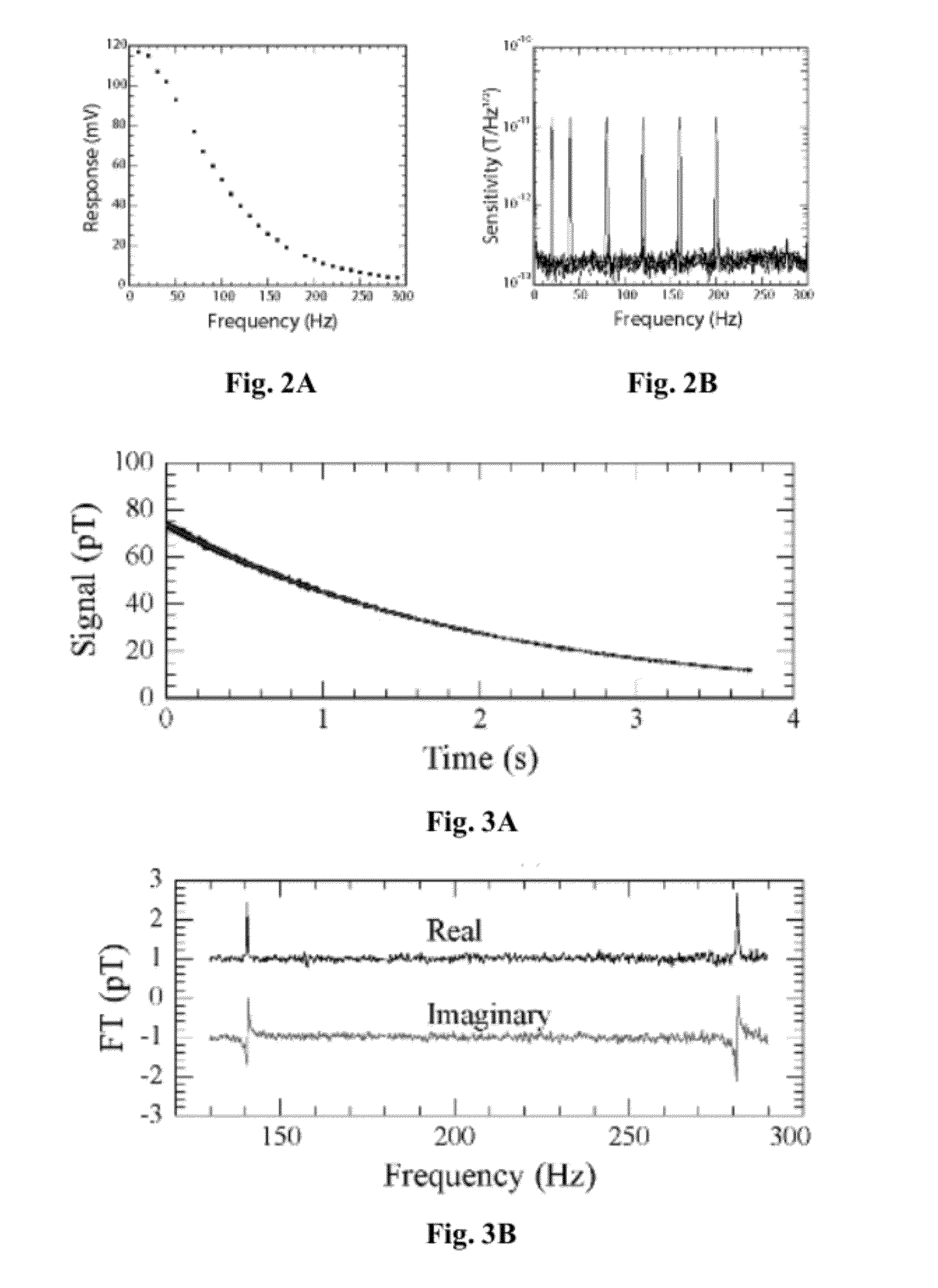Detection of J-coupling using atomic magnetometer
a technology of atomic magnetometer and j-coupling, which is applied in the direction of measurement using nmr, instruments, nuclear magnetic resonance analysis, etc., can solve the problems of large, expensive, immobile, and inability to remove the requirement for a superconducting magnet, and the sensitivity of low-field nmr is typically low compared to conventional high-field nmr
- Summary
- Abstract
- Description
- Claims
- Application Information
AI Technical Summary
Benefits of technology
Problems solved by technology
Method used
Image
Examples
example
[0085]The invention will be described in greater detail by way of a specific example. The following example is offered for illustrative purposes, and is intended neither to limit nor define the invention in any manner.
[0086]Experimental Setup
[0087]The zero-field spectrometer of the present invention is similar to that of McDermott4 and is shown schematically in FIG. 7 (a), including an atomic magnetometer, consisting of a Rb vapour cell and two lasers for optical pumping and probing, operates in the spin-exchange relaxation-free8 regime. The cell is placed inside a set of magnetic shields (not shown), and residual magnetic fields are zeroed to within ≈1 μG. The vapour cell has dimensions 5 mm□2 mm□1 mm, contains 87Rb and 1300 torr of N2 buffer gas mm, and was microfabricated using lithographic patterning and etching techniques.
[0088]The cell is heated to 210° C. via an electric heating element wound around an aluminium-nitride spool. The sensitivity of the magnetometer is about 0.15...
PUM
| Property | Measurement | Unit |
|---|---|---|
| static magnetic field | aaaaa | aaaaa |
| larmor precession frequency | aaaaa | aaaaa |
| static magnetic field | aaaaa | aaaaa |
Abstract
Description
Claims
Application Information
 Login to View More
Login to View More - R&D
- Intellectual Property
- Life Sciences
- Materials
- Tech Scout
- Unparalleled Data Quality
- Higher Quality Content
- 60% Fewer Hallucinations
Browse by: Latest US Patents, China's latest patents, Technical Efficacy Thesaurus, Application Domain, Technology Topic, Popular Technical Reports.
© 2025 PatSnap. All rights reserved.Legal|Privacy policy|Modern Slavery Act Transparency Statement|Sitemap|About US| Contact US: help@patsnap.com



